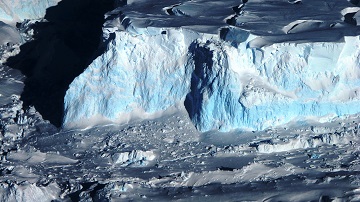631222-doomsday glacier.jpg

Thwaite's Glacier in Antarctica. Credit: sjrankin, CC BY-NC 2.0
Earth’s glaciers are melting. But some are in a bigger hurry than others. A glacier in Antarctica is adding water to the oceans faster than any other. More than a trillion tons of its ice have melted since 2000. That’s raised global sea level by a few millimeters. And the glacier could add a lot more to the oceans in the decades ahead.
Thwaite’s Glacier covers an area as big as Florida. And it has a nickname: the Doomsday Glacier. A collapse could raise sea level by as much as three feet.
The glacier is so far from any research base that it didn’t receive a lot of hands-on attention until recently. Today, though, an international project is deploying people and equipment all across it. The project sent out its first expedition in 2018, and it’s scheduled to continue through 2023.
Scientists are using satellites to track the glacier’s height and motions. They’re recording air and ice temperatures, and drilling into the ice to determine the glacier’s history. And they’re using ships and underwater robots to plot ocean currents and to explore the glacier’s edge, which extends far out to sea.
The glacier meets the water at a ridge—sort of like a tee holding up a golf ball. Melting ice behind the ridge has created a pool of warmer water. Scientists are concerned that water could tunnel through the glacier at that point, causing it to collapse. A recent study said that’s not likely to happen soon, though—perhaps delaying “doomsday” from Thwaite’s Glacier.

